In the realm of home exteriors, the bold use of color can transform a traditional facade into a striking statement of individuality and style. Among the myriad of choices, crimson red stands out as a color that demands attention and breathes life into classic style exteriors. This vibrant hue, when applied thoughtfully, creates an eye-catching contrast that enhances the architectural details of a home, making it a standout piece in any neighborhood. Through a focus on classic exteriors, the application of crimson red as a primary or accent color showcases how traditional designs can embrace boldness while maintaining their timeless appeal.
Crimson Red Doors Highlight Classic Outdoor House Colors
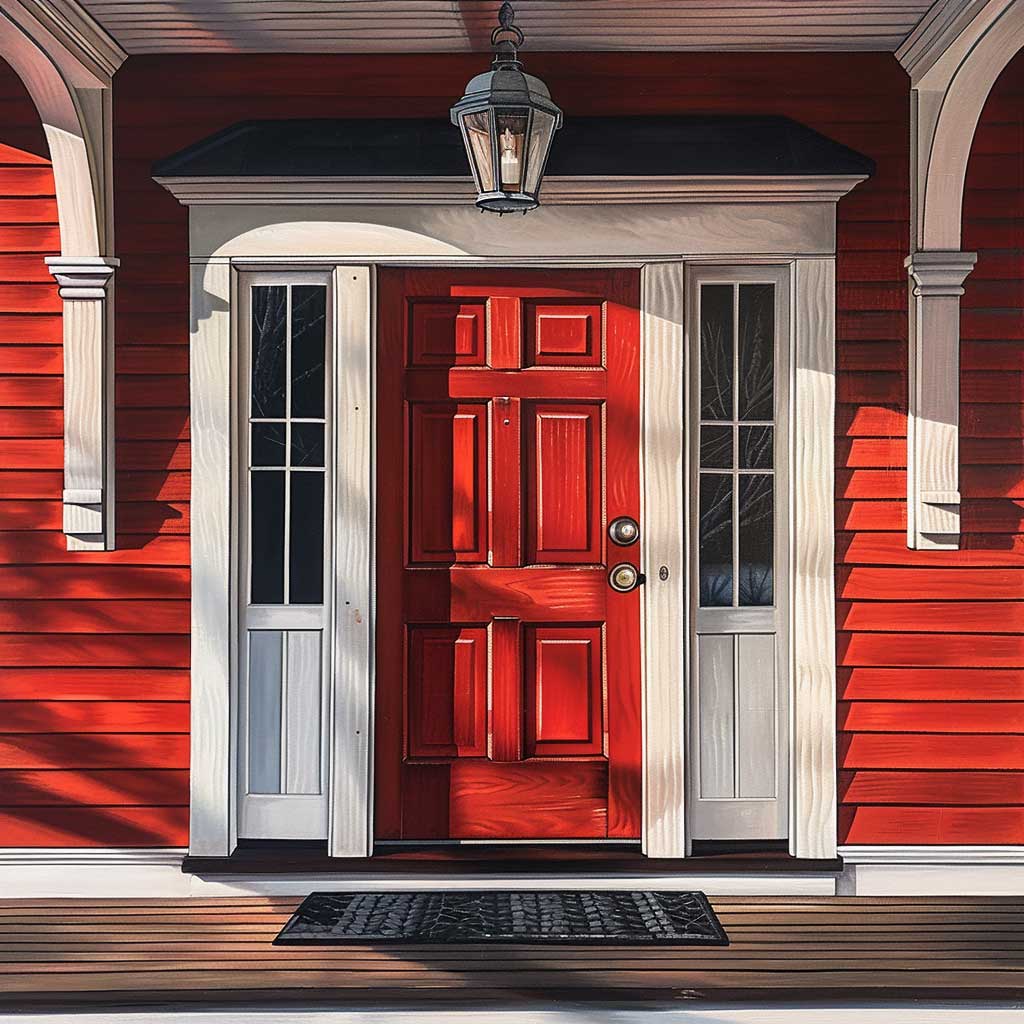



The impact of a crimson red door on a home’s exterior cannot be overstated. In the dance of outdoor house colors, where hues and shades play off each other to create a visual symphony, a crimson door acts as the bold crescendo, a focal point that draws the eye and commands attention. This essay delves into the transformative power of such a door set against the backdrop of classic home exteriors.
A close-up display of a classic home’s entrance reveals the intricate dance between tradition and bold modernity. The choice of a crimson red door is both a nod to the past and a leap into the present. Historically, red doors have symbolized welcome, safety, and prosperity. When applied to the entrance of a home with traditional architectural elements—be it the clean lines of a Colonial or the ornate woodwork of a Victorian—the crimson door becomes a bridge between eras, marrying the timeless appeal of classic designs with the vibrancy of contemporary color choices.
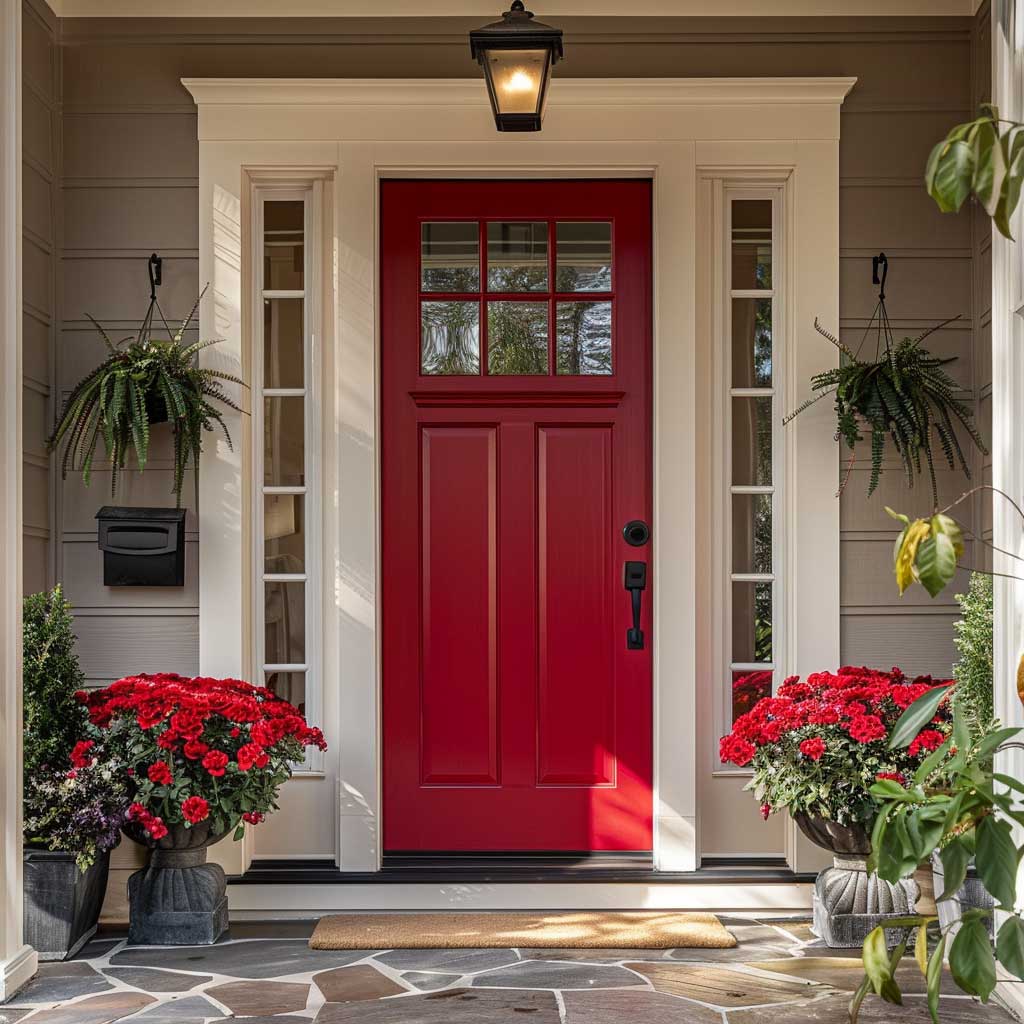
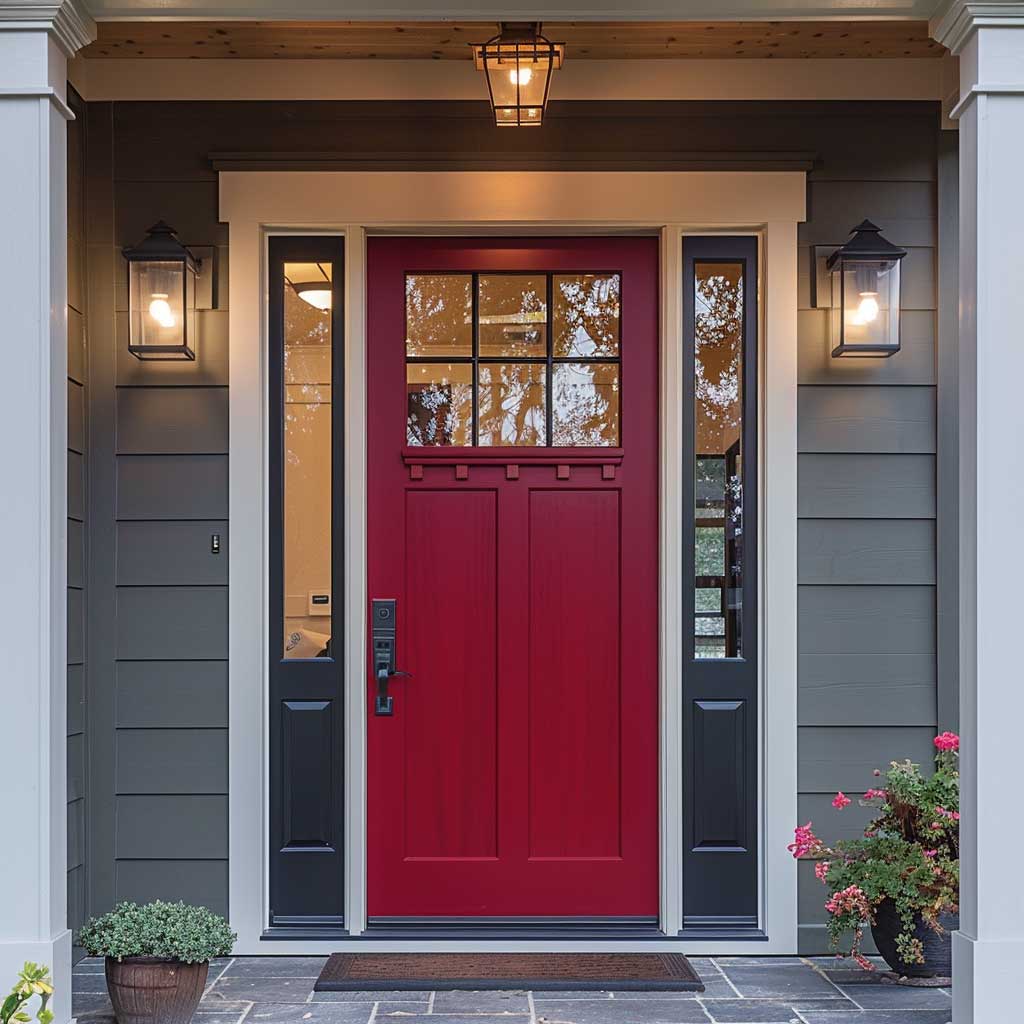
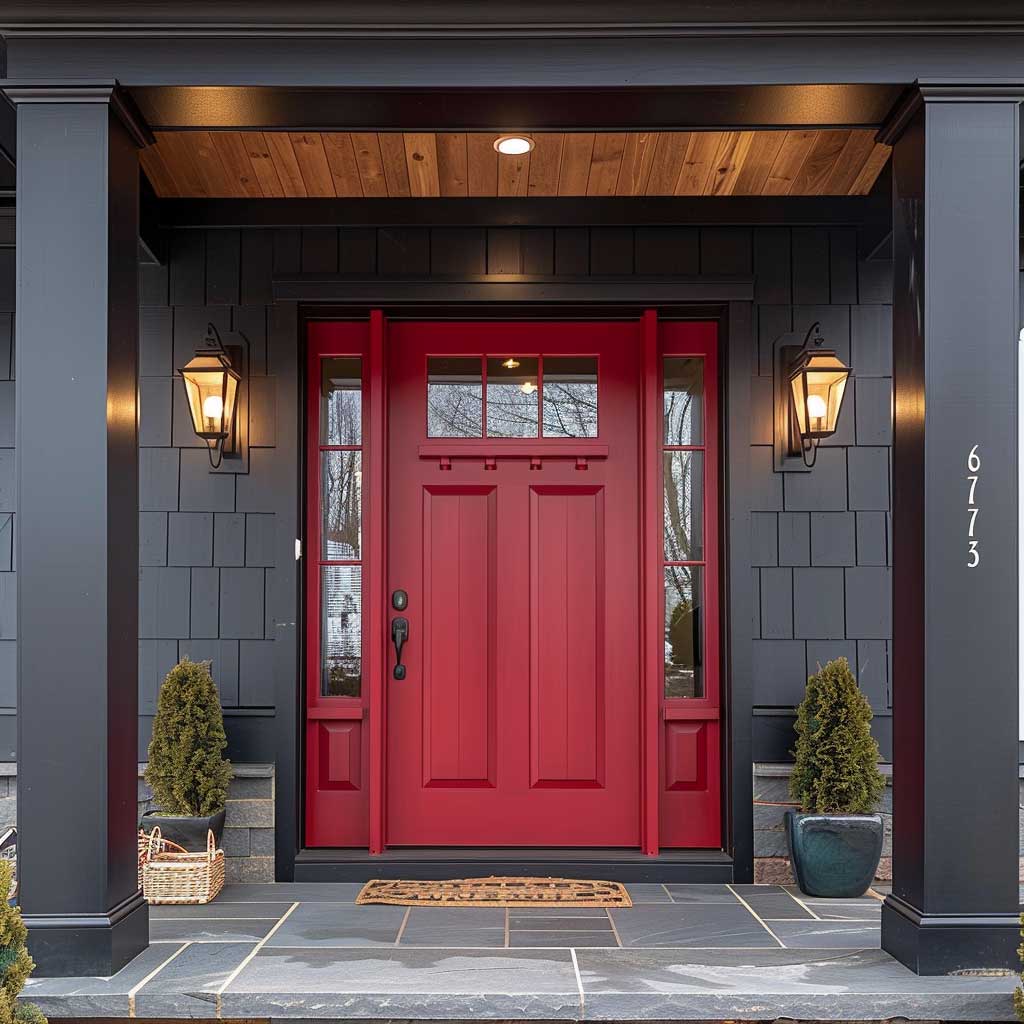
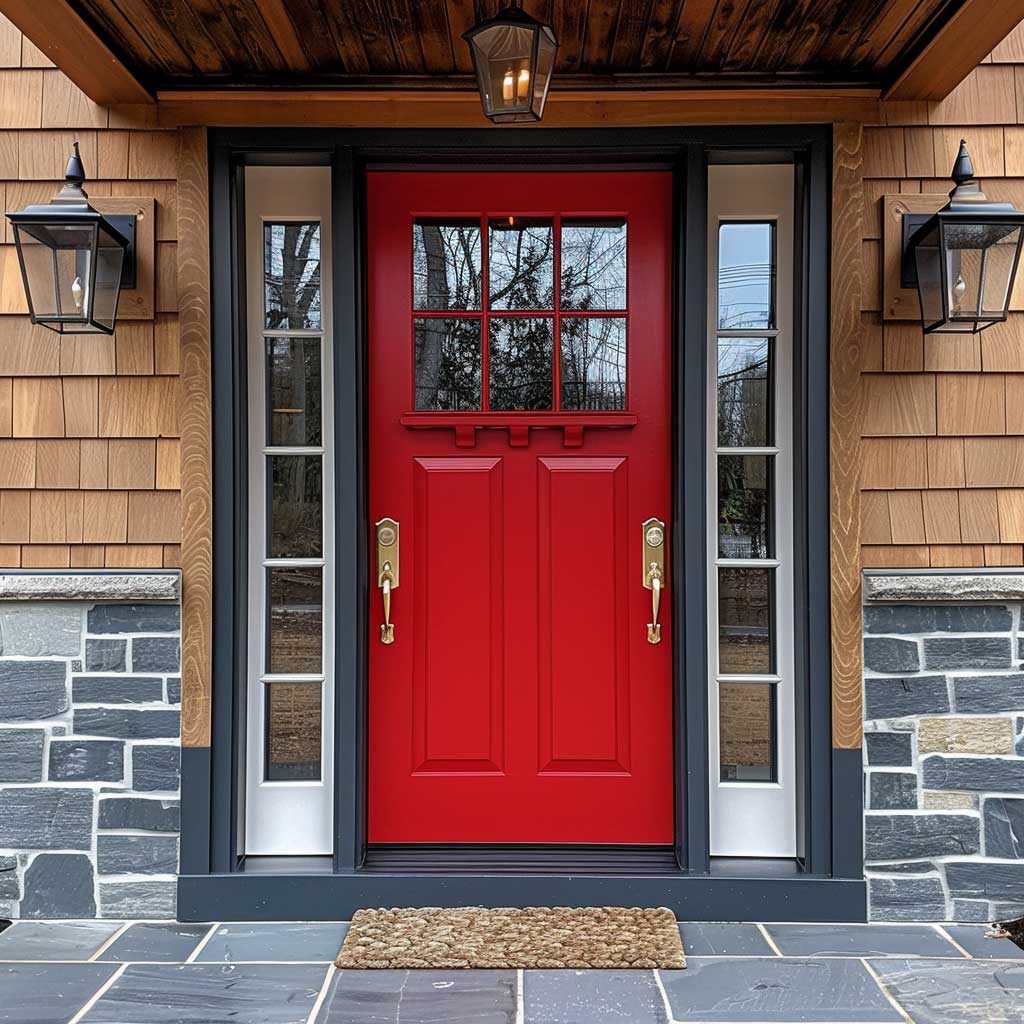
The visual impact of such a choice is immediately apparent in the detailed woodwork and craftsmanship of the door, illuminated by soft natural lighting. The crimson hue stands in stark contrast to the more subdued outdoor house colors typically found in classic designs, such as whites, creams, and grays. This contrast is not jarring; rather, it serves to enhance the architectural features of the home, drawing attention to the craftsmanship and welcoming nature of the entrance.
Beyond its aesthetic appeal, a crimson red door on a classic home exterior makes a statement about the inhabitants’ personality and style. It suggests a willingness to embrace tradition while making bold choices that reflect individual tastes. This balance between conformity and individuality is at the heart of what makes classic exteriors so enduringly appealing. The door, in its vibrant hue, becomes a symbol of the home’s unique character, setting it apart from its neighbors in a display of confidence and creativity.




In the context of outdoor house colors, the choice of crimson for the door is a masterstroke. It demonstrates how a single element, carefully selected and thoughtfully integrated, can transform the entire appearance of a home. The crimson door does not just accentuate the classic colors; it revitalizes them, breathing new life into the facade and redefining what it means to be classic. Through this lens, the house is no longer just a structure; it’s a canvas for personal expression, a space where the past and present coexist in beautiful harmony.
This exploration into the effect of a crimson red door on classic exteriors showcases the limitless possibilities inherent in the choice of outdoor house colors. It reaffirms the power of color to alter perception, evoke emotions, and create a sense of identity. As we move forward, let’s delve into how other crimson accents can similarly redefine the character of a home’s exterior.
Bold Crimson Window Trims Reinvent Traditional Exteriors
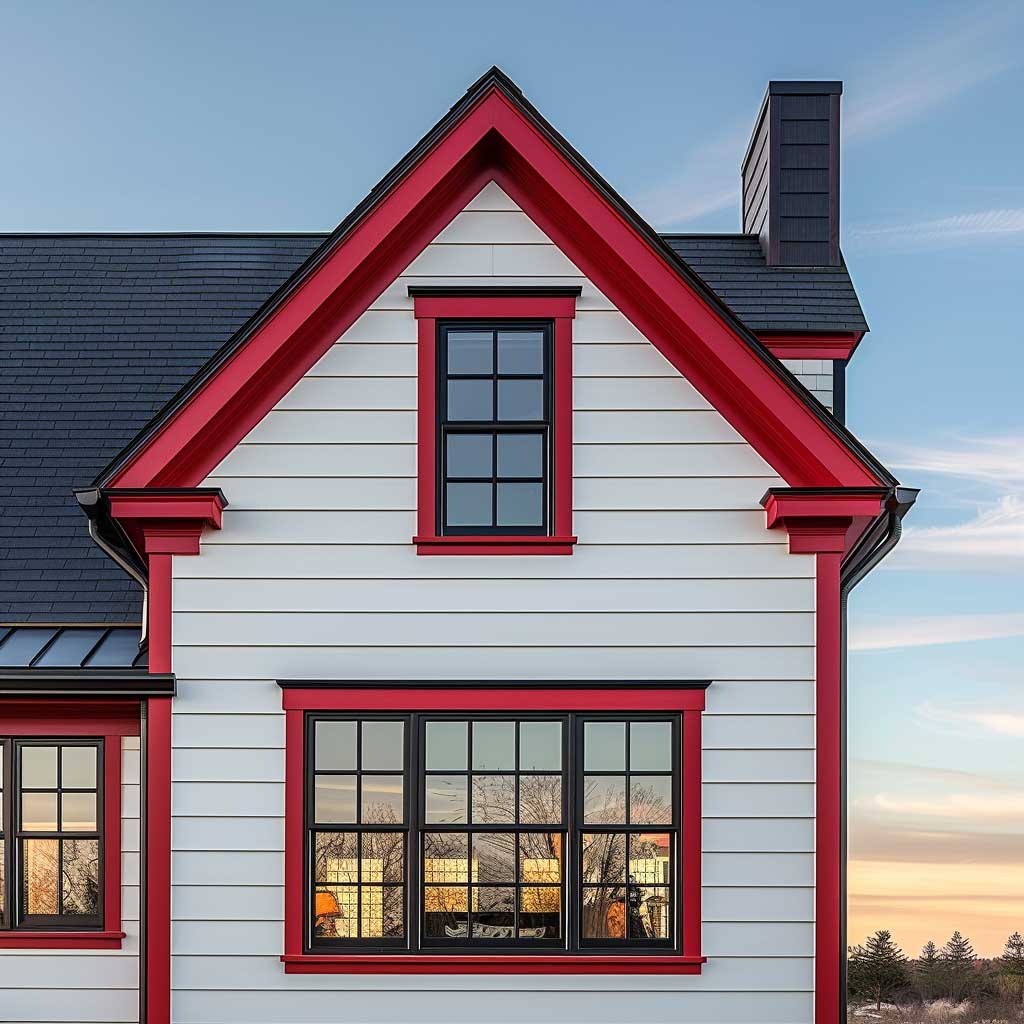



The selection of outdoor house colors is a pivotal decision in defining a home’s character. While traditional exteriors often adhere to a more conservative palette, the introduction of bold colors can dramatically shift this narrative. Crimson window trims stand as a testament to this transformative power, offering a fresh perspective on classic design.
Visual Impact: Imagine the scene: a house characterized by its timeless architectural features, perhaps with stone facades or wooden sidings painted in earthy tones. Here, the windows, framed in vivid crimson, serve not just as openings to the world but as dynamic accents that catch and hold the observer’s attention. This essay explores the effect of such bold window trims on the home’s overall aesthetic, highlighting how they add depth, contrast, and a touch of modernity to traditional settings.
Crimson’s Role in Exterior Design: Crimson, a color rich in vibrancy and depth, carries with it a history of prominence and luxury. When applied to window trims, it encapsulates a daring blend of warmth and boldness, making the windows not merely architectural elements but focal points of design. The color’s brilliance is especially pronounced under the clear sky, where its depth can be fully appreciated in contrast to the more subdued tones of the exterior walls.
Architectural Harmony: The incorporation of crimson window trims requires a careful consideration of balance and harmony. This section would delve into the principles of color theory and architectural design that guide the integration of such a striking hue into traditional exteriors. It examines how the crimson trims interact with natural light and shadow, enhancing the texture and form of the home’s architectural details.
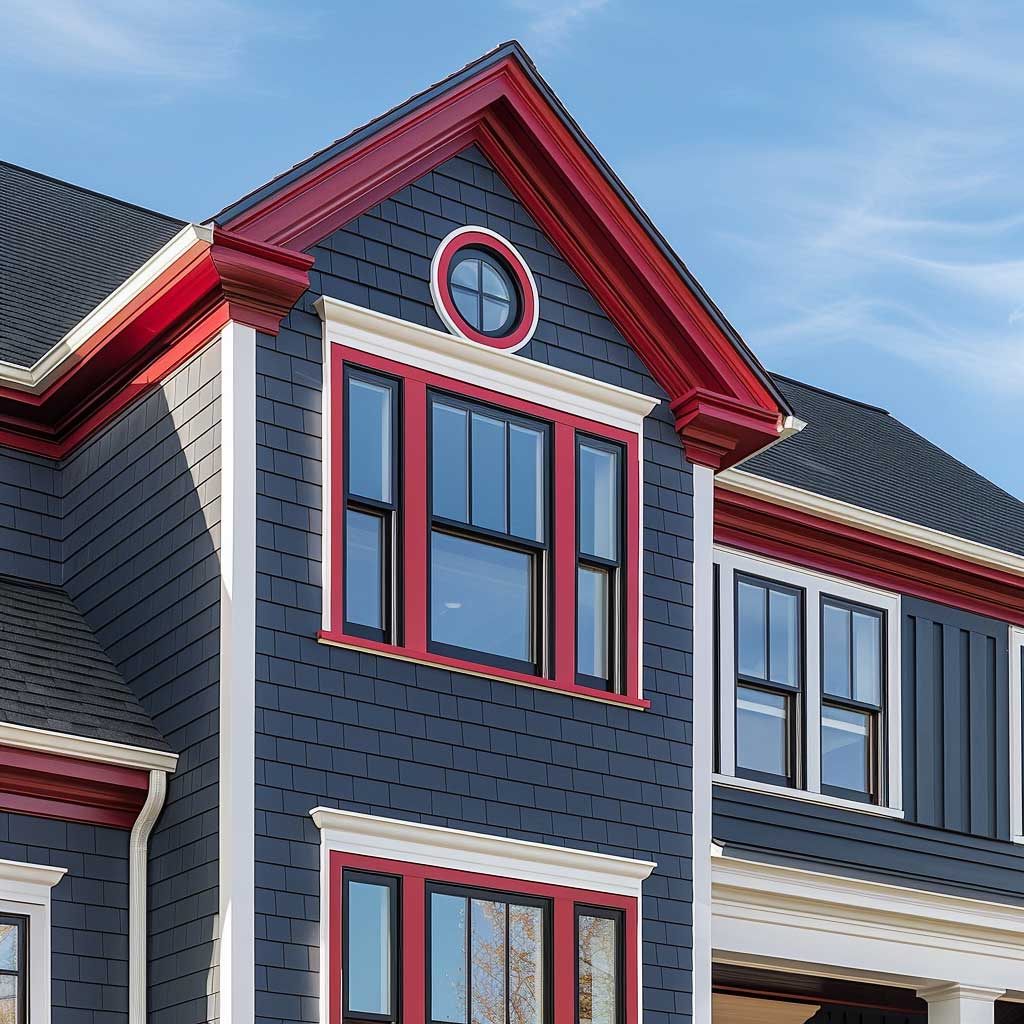

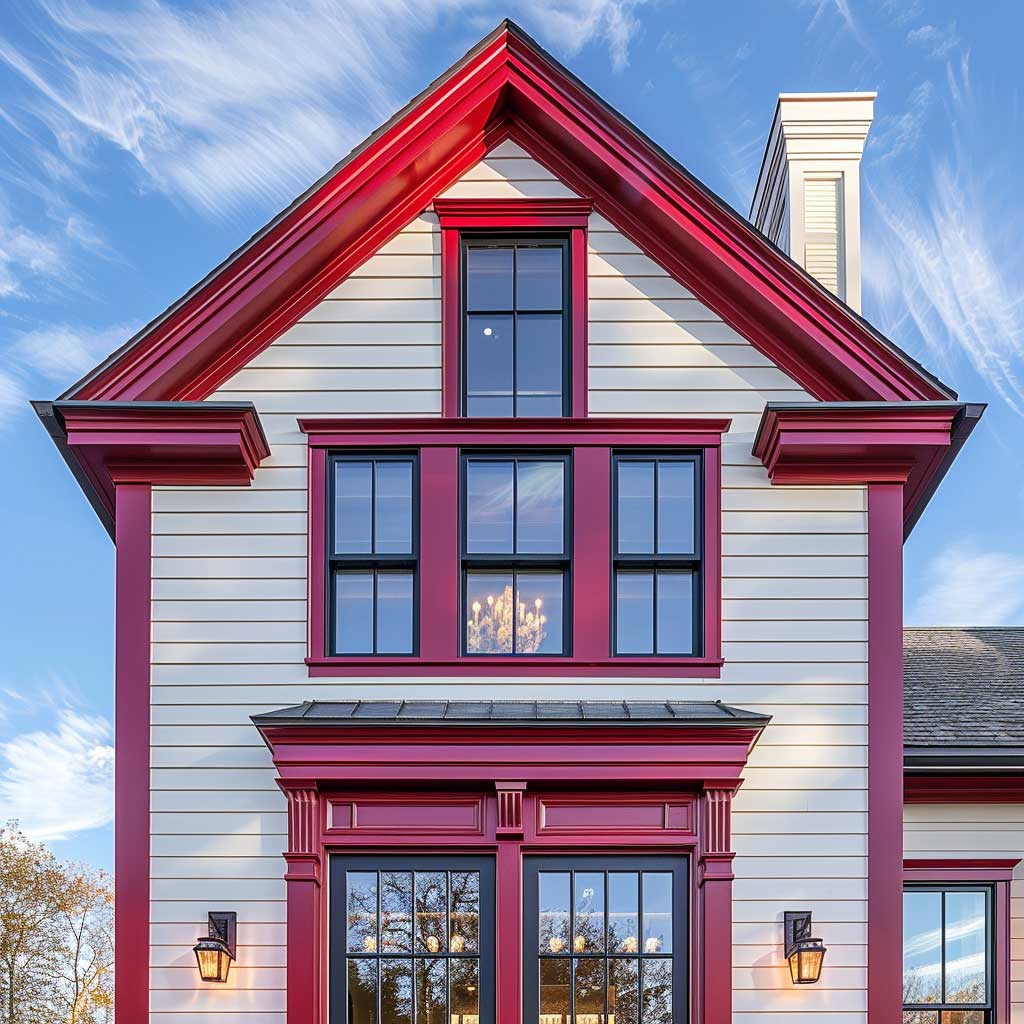
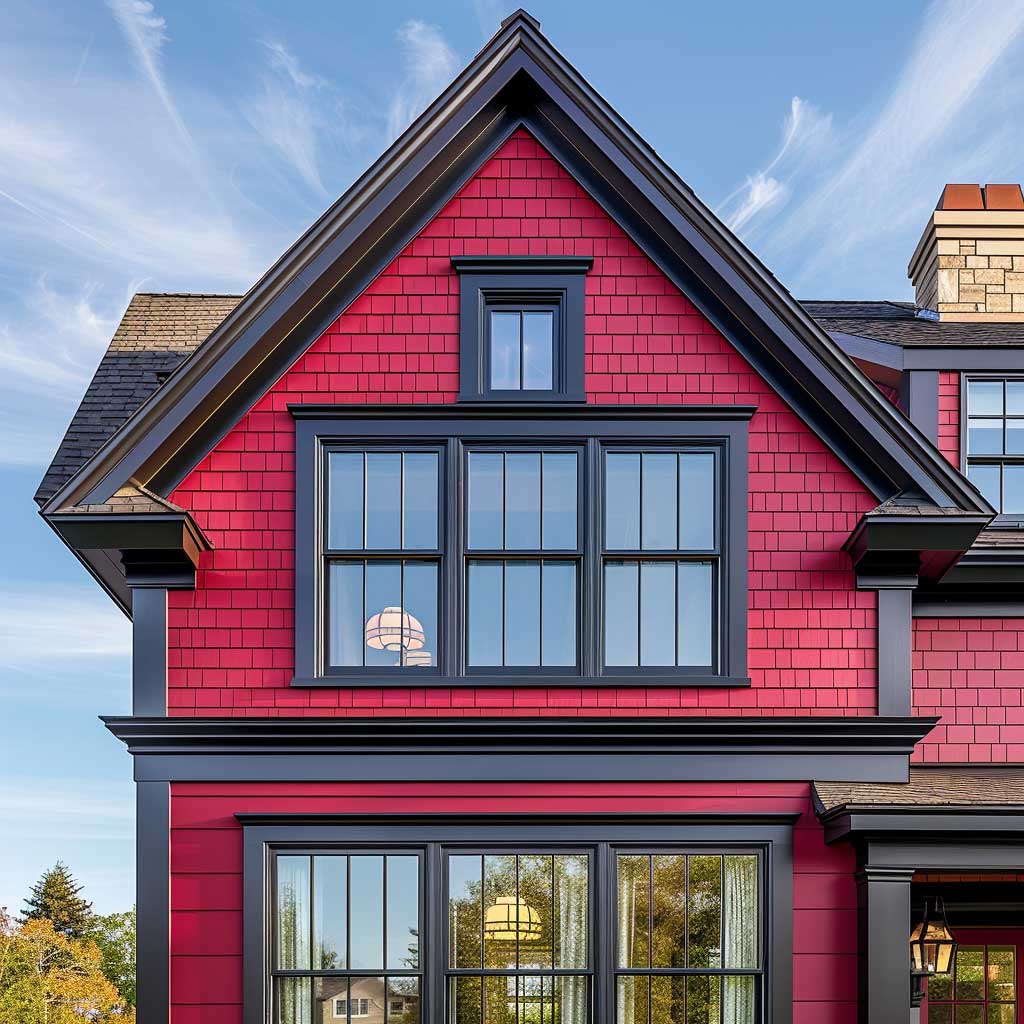
Emotional and Psychological Effects: Beyond aesthetics, the choice of color in our living spaces has profound emotional and psychological implications. Crimson, with its energy and intensity, evokes feelings of passion and vitality. This part of the essay would explore how the bold window trims can influence the mood and atmosphere of both the home and its surroundings, contributing to a sense of liveliness and warmth.
The decision to adorn traditional exteriors with crimson window trims is a bold declaration of individuality and style. This choice not only redefines the boundaries of classic design but also celebrates the uniqueness of the home and its inhabitants. Through a detailed examination of its visual, emotional, and psychological impacts, this essay underscores the transformative potential of integrating vibrant hues into outdoor house colors, encouraging homeowners to envision and create exteriors that truly reflect their personality and taste.
Classic Facades Shine with Crimson Red Accent Features


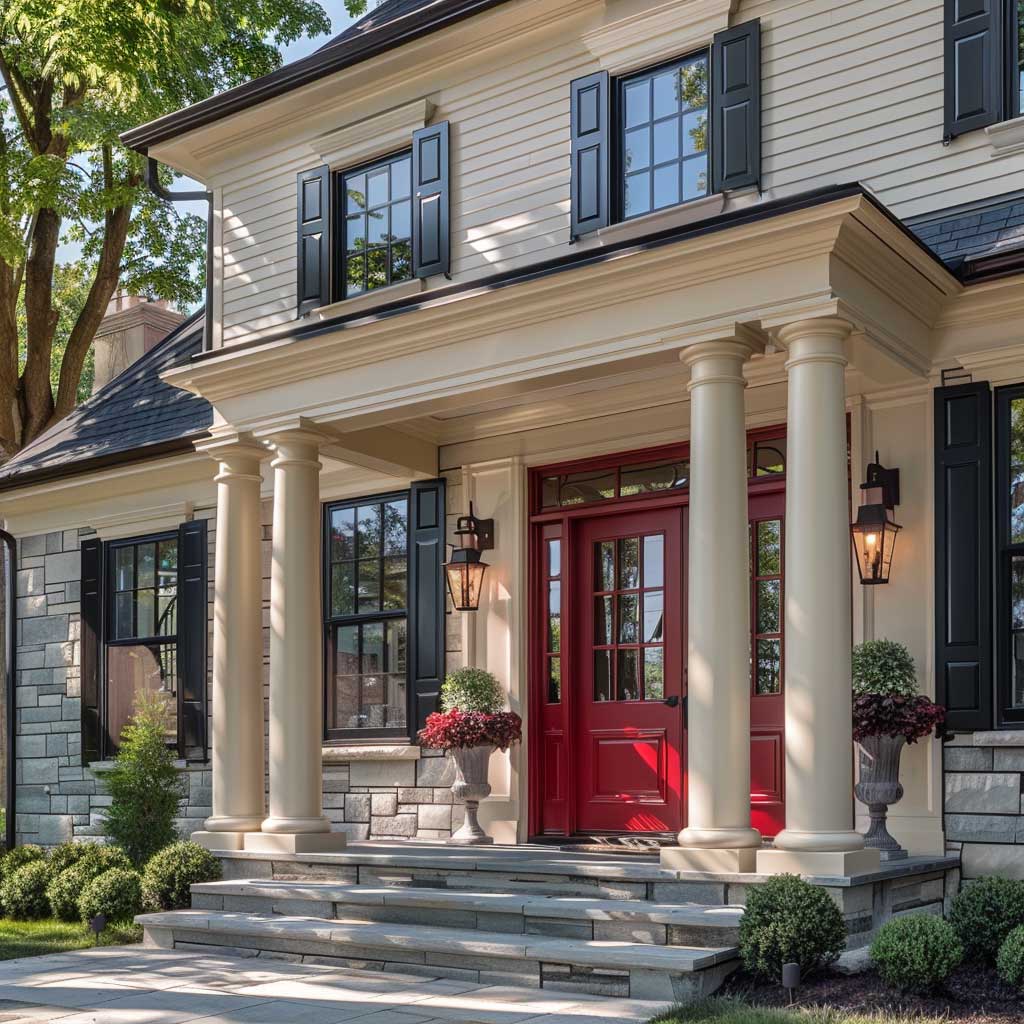
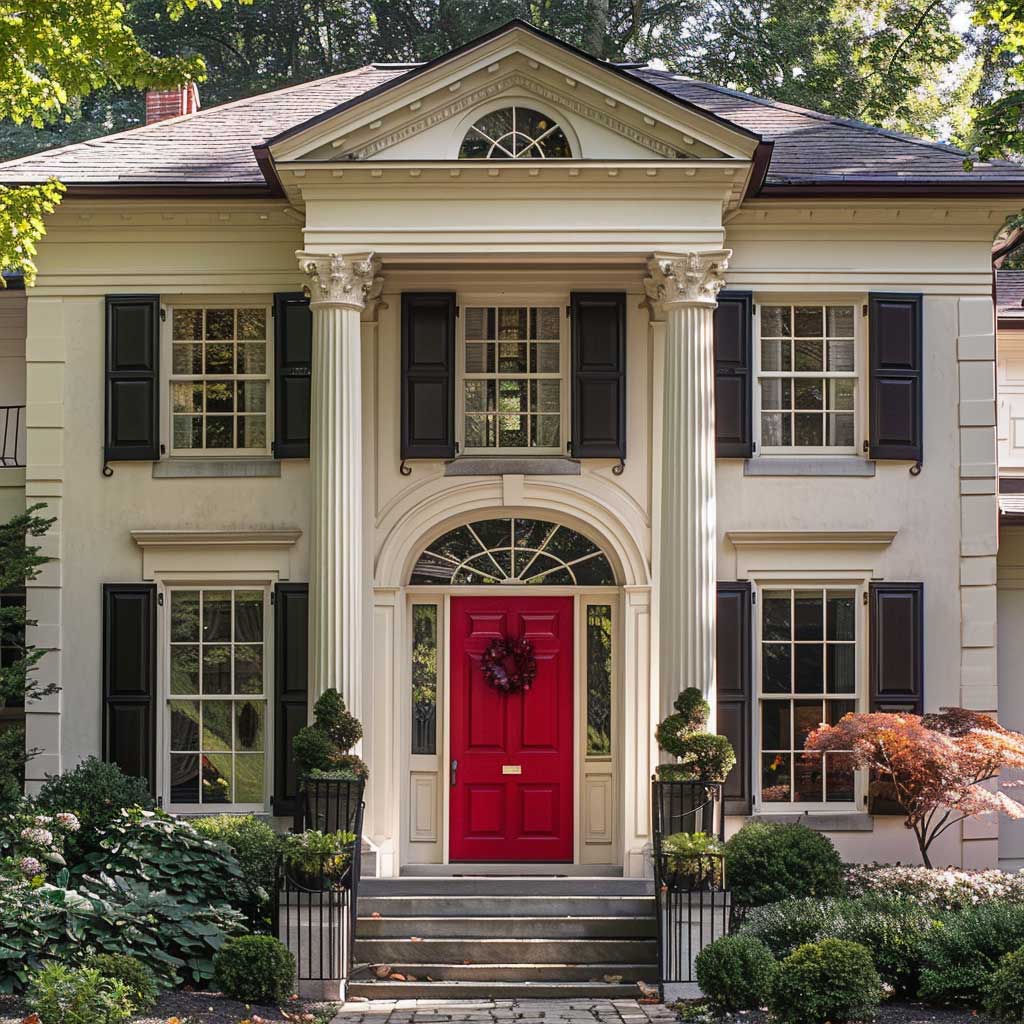
The harmony of color in the realm of architecture speaks volumes about the balance between tradition and personal expression. Within the spectrum of outdoor house colors, crimson red emerges not just as a color but as a statement, especially when applied as an accent feature on classic facades. This exploration delves into the nuanced application of crimson red accents that bring classic exteriors to life, adding vibrancy and character to traditional designs.
Accentuating Architectural Details: The focal point of this narrative is the strategic application of crimson red on various exterior features such as shutters, trim, and decorative elements. These features serve as the canvas for this bold hue, transforming the facade’s visual appeal. The essay would analyze how these crimson accents underscore the architectural details of the home, enhancing its aesthetic richness and drawing attention to the craftsmanship inherent in classic styles.
Color Contrast and Cohesion: Central to the discussion is the role of color contrast in exterior design. Crimson red, set against more muted or traditional outdoor house colors, creates a dynamic visual interplay that highlights the home’s architectural lines and shapes. This section would delve into the principles of color theory that guide the creation of a cohesive look, ensuring that the crimson accents complement rather than overpower the overall design.
Historical and Cultural Significance: Crimson has a deep historical and cultural resonance that adds layers of meaning to its use in exterior design. The essay would touch upon the significance of this color in various contexts and how its application in accent features can evoke a sense of heritage and continuity, linking the home to broader architectural traditions and narratives.
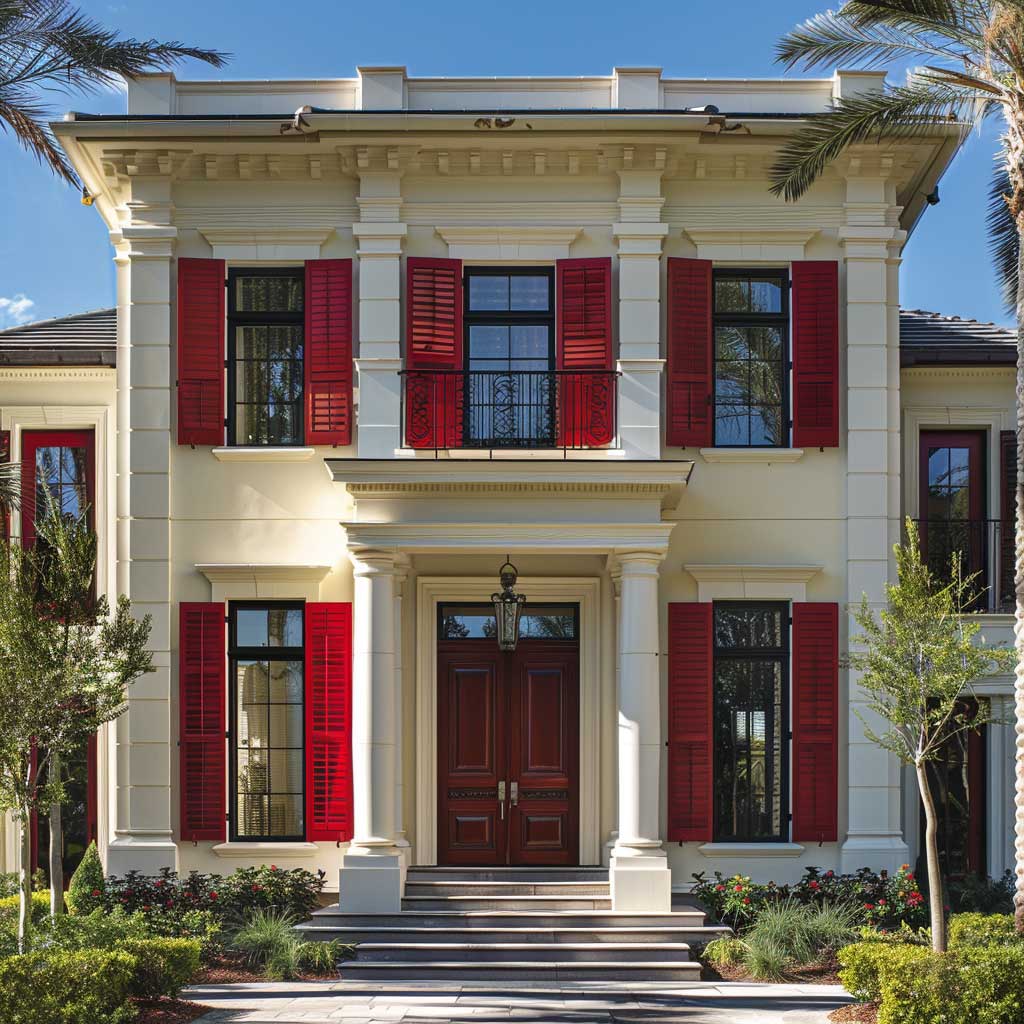
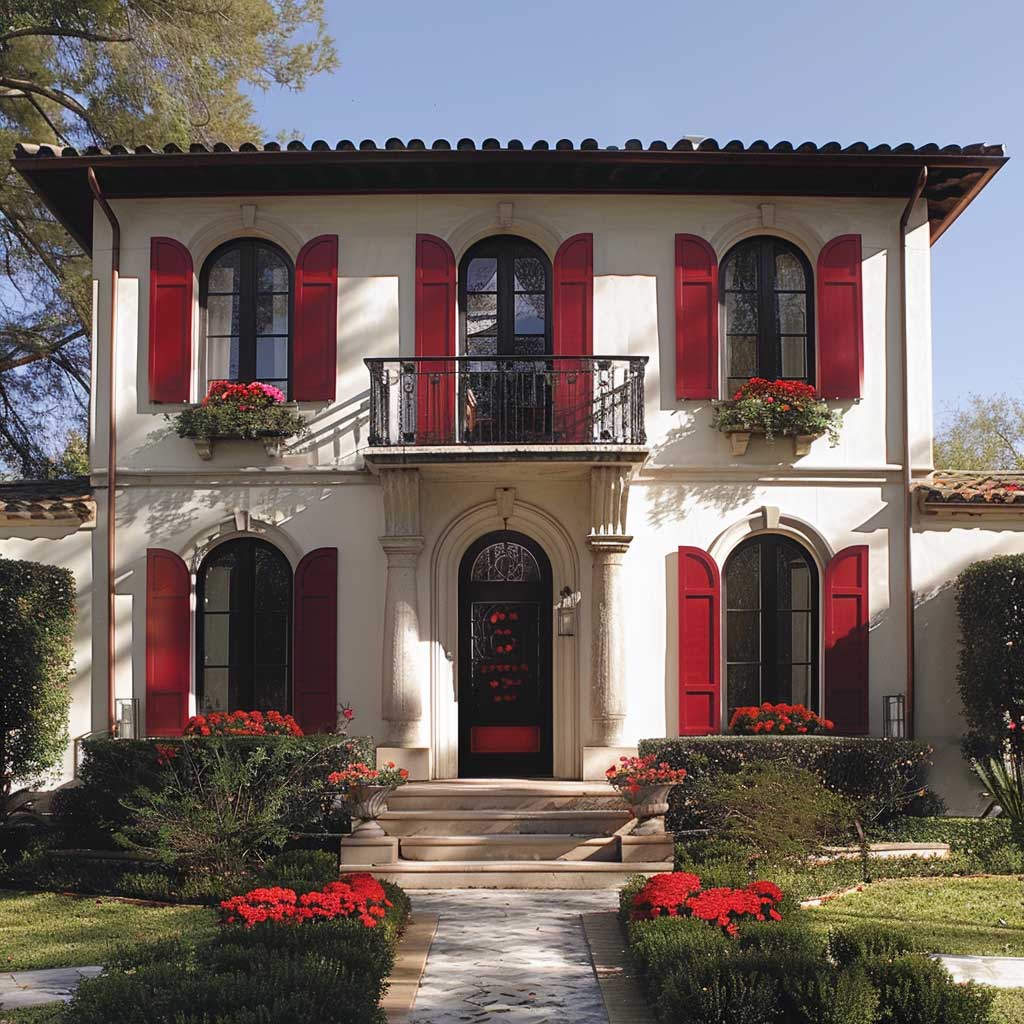
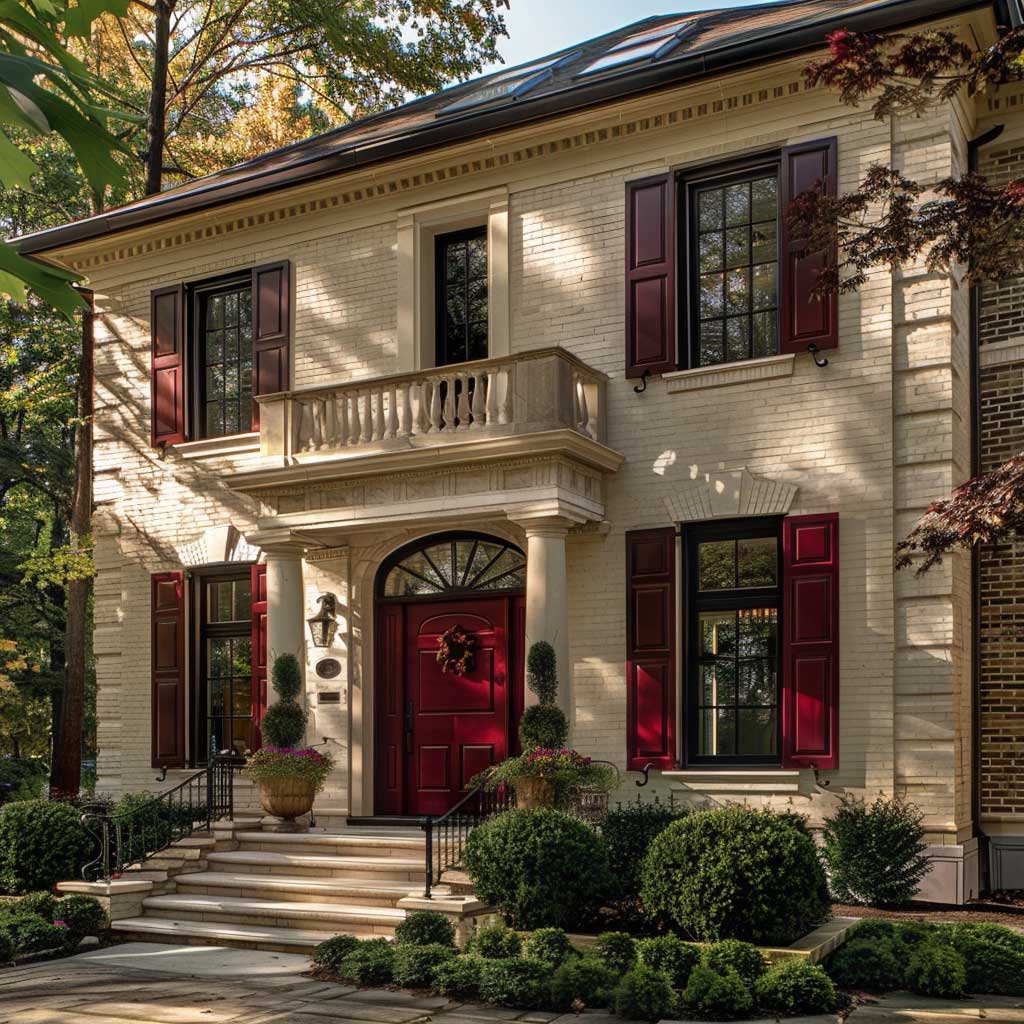
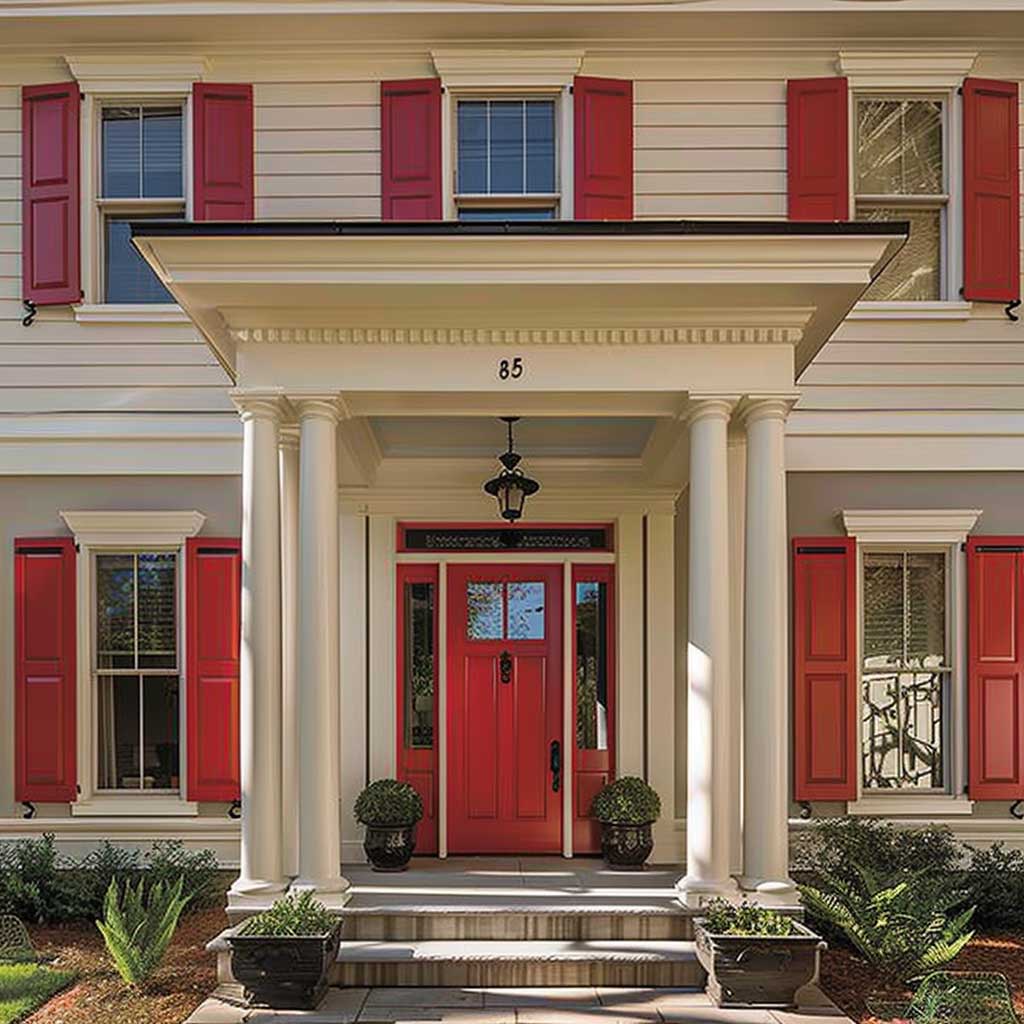
Emotional Impact and Curb Appeal: Beyond aesthetics, the choice of exterior colors affects the emotional ambiance of a space and its curb appeal. Crimson red, known for its warmth and vitality, can transform the perception of a home from merely a structure to a vibrant, welcoming space. This part would explore the psychological effects of color on both inhabitants and onlookers, emphasizing the role of crimson accents in creating a compelling and inviting exterior.
Incorporating crimson red accent features into classic facades represents a marriage of boldness and tradition, a visual testament to the homeowner’s confidence and flair. This choice not only enhances the home’s architectural beauty but also infuses it with personality and warmth, making the classic facade shine anew. Through detailed examination, this essay celebrates the transformative power of color in shaping our living environments, encouraging a thoughtful approach to personalizing our homes.
The judicious application of crimson red in the context of outdoor house colors serves as a vibrant testament to the power of contrast in architecture. This rich, dynamic shade has the ability to elevate a home’s exterior from the realm of the conventional to the extraordinary. By focusing on classic exteriors, the infusion of crimson red—whether through doors, window trims, or accent features—demonstrates that traditional homes can boldly venture into the territory of vibrant colors while retaining their architectural integrity. This approach not only enhances the aesthetic value of the property but also reflects the homeowner’s confidence in making a statement that is both unique and timeless. As we explore the transformative effect of crimson red on classic style exteriors, it becomes clear that the right color choices can create a lasting impact, turning a house into a home with character, warmth, and unparalleled curb appeal.












